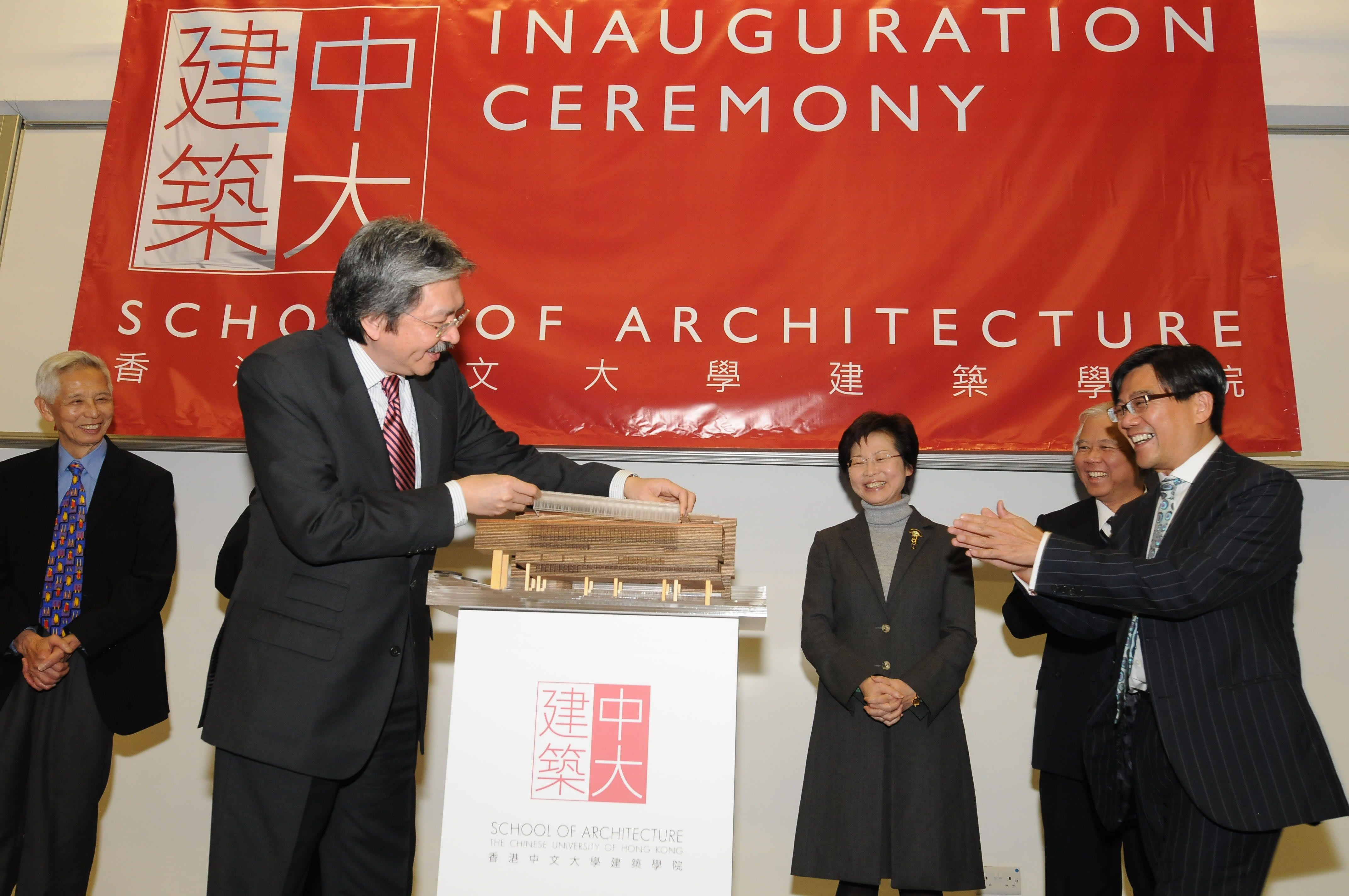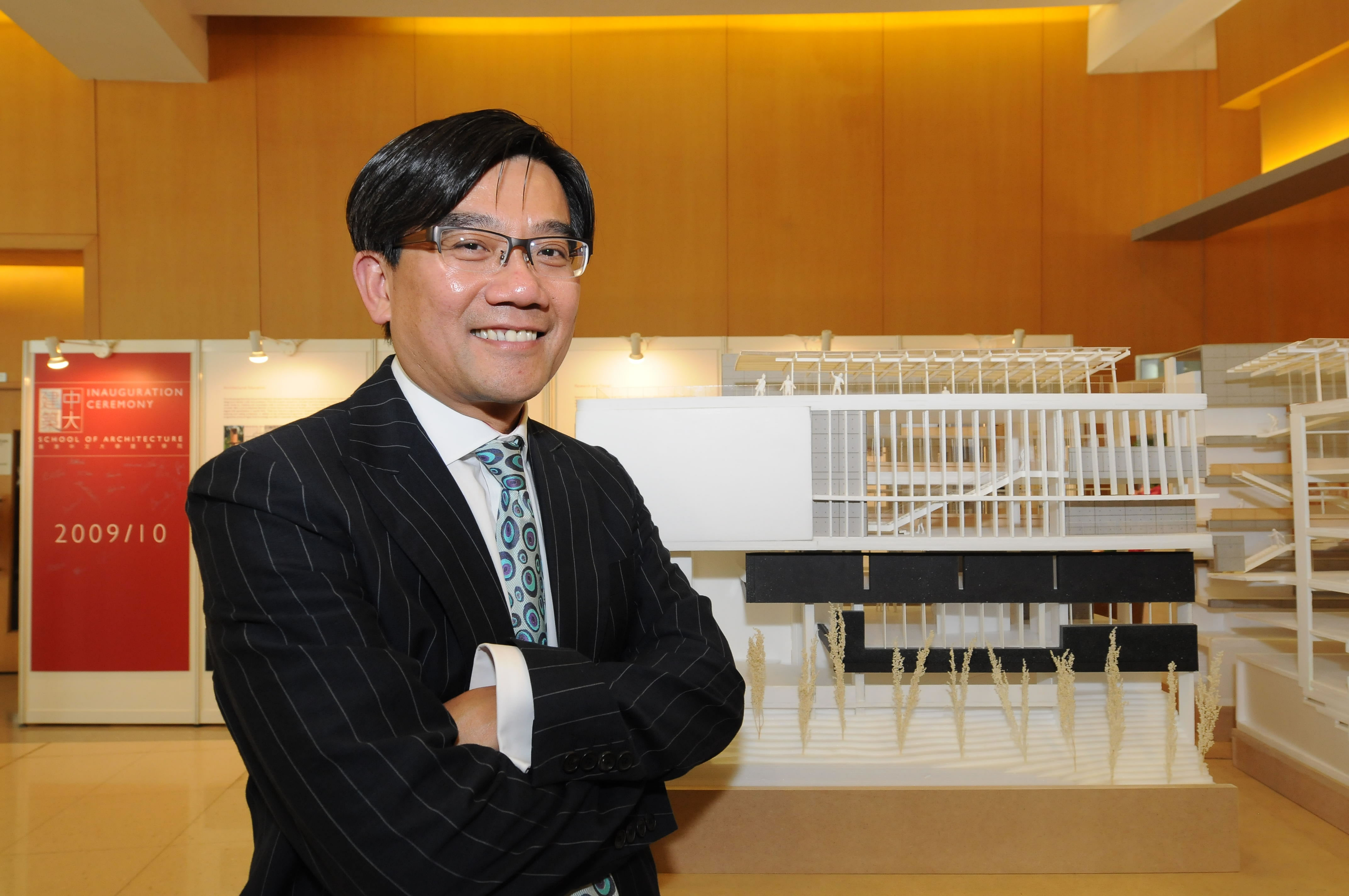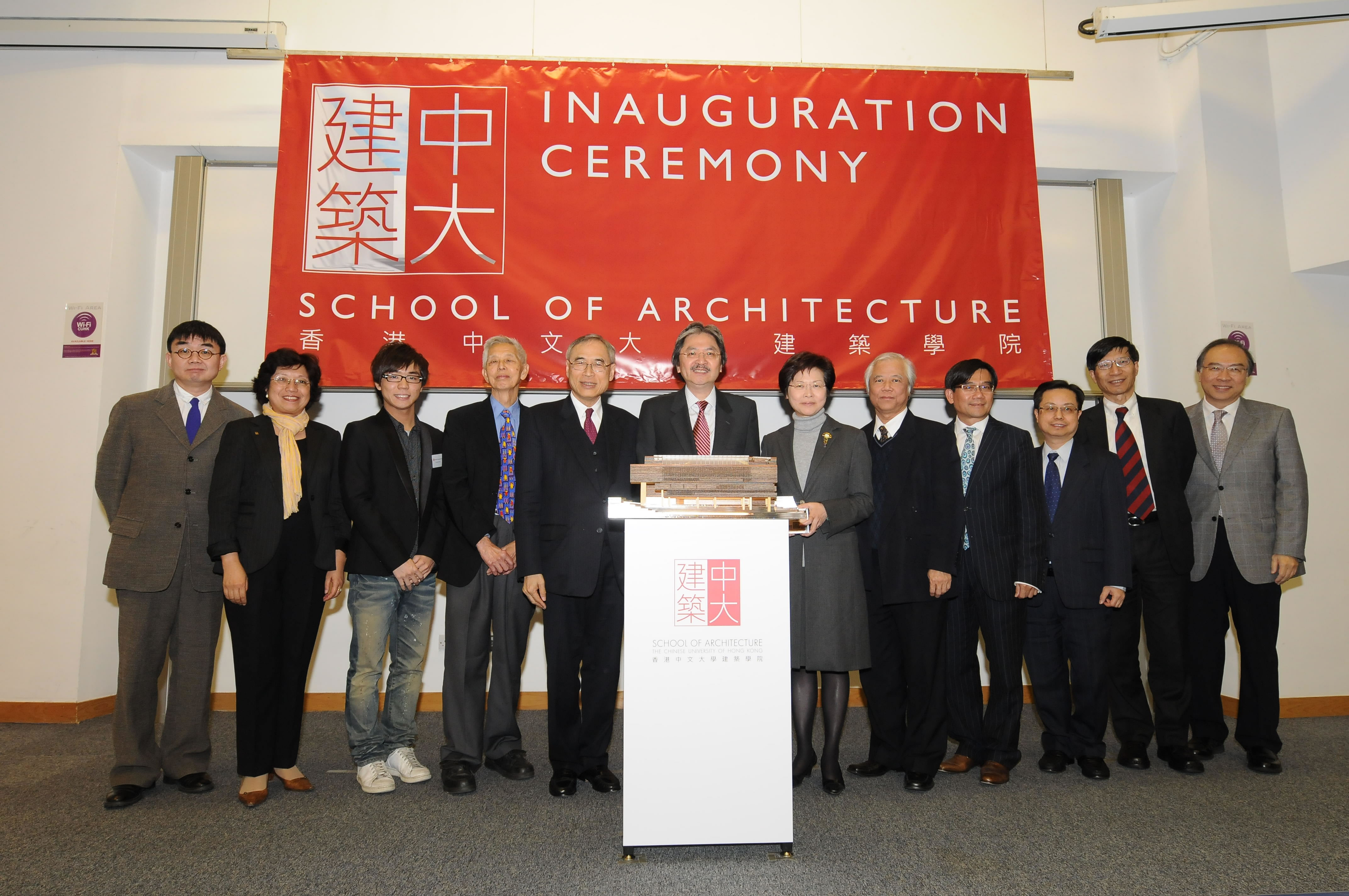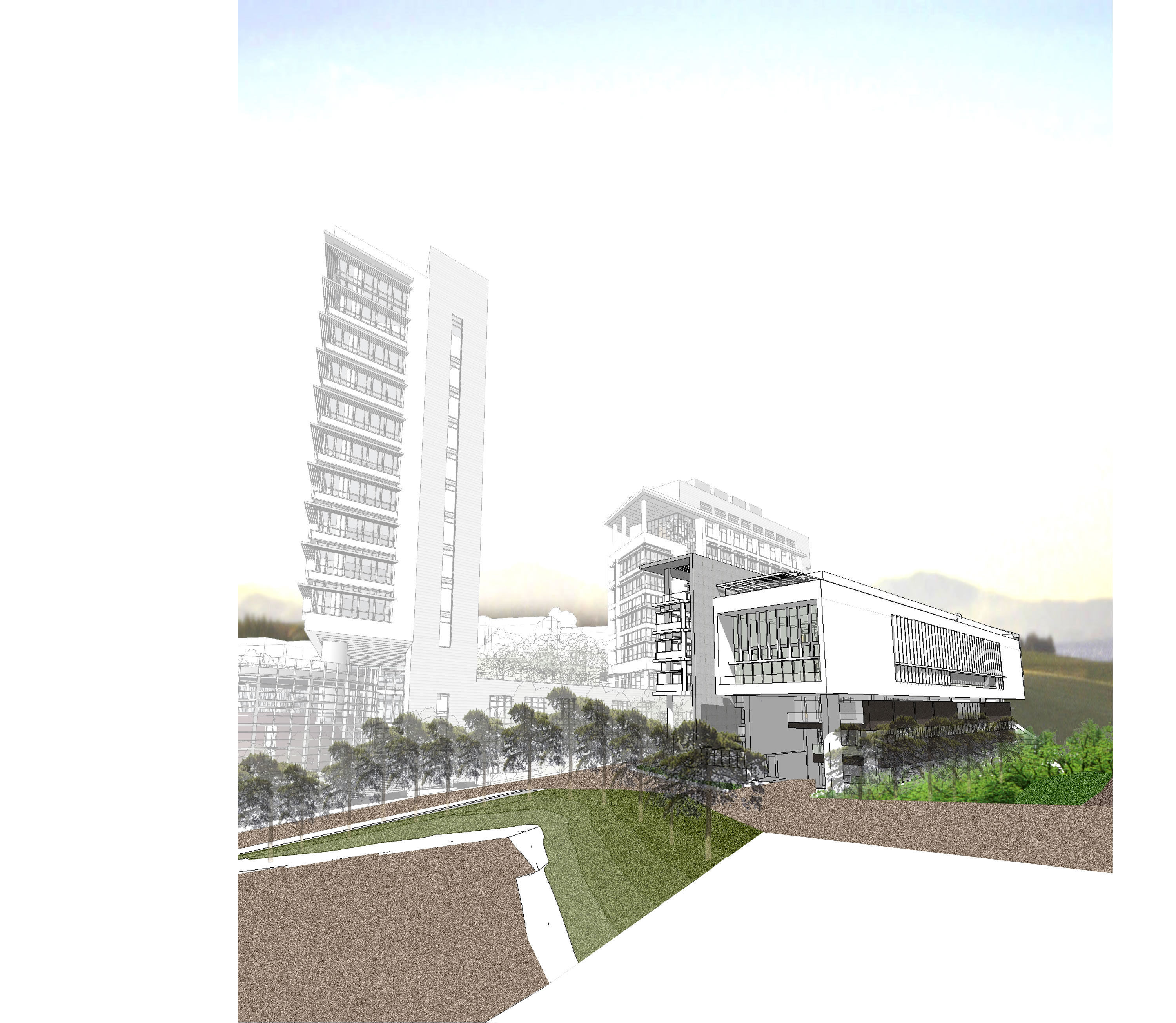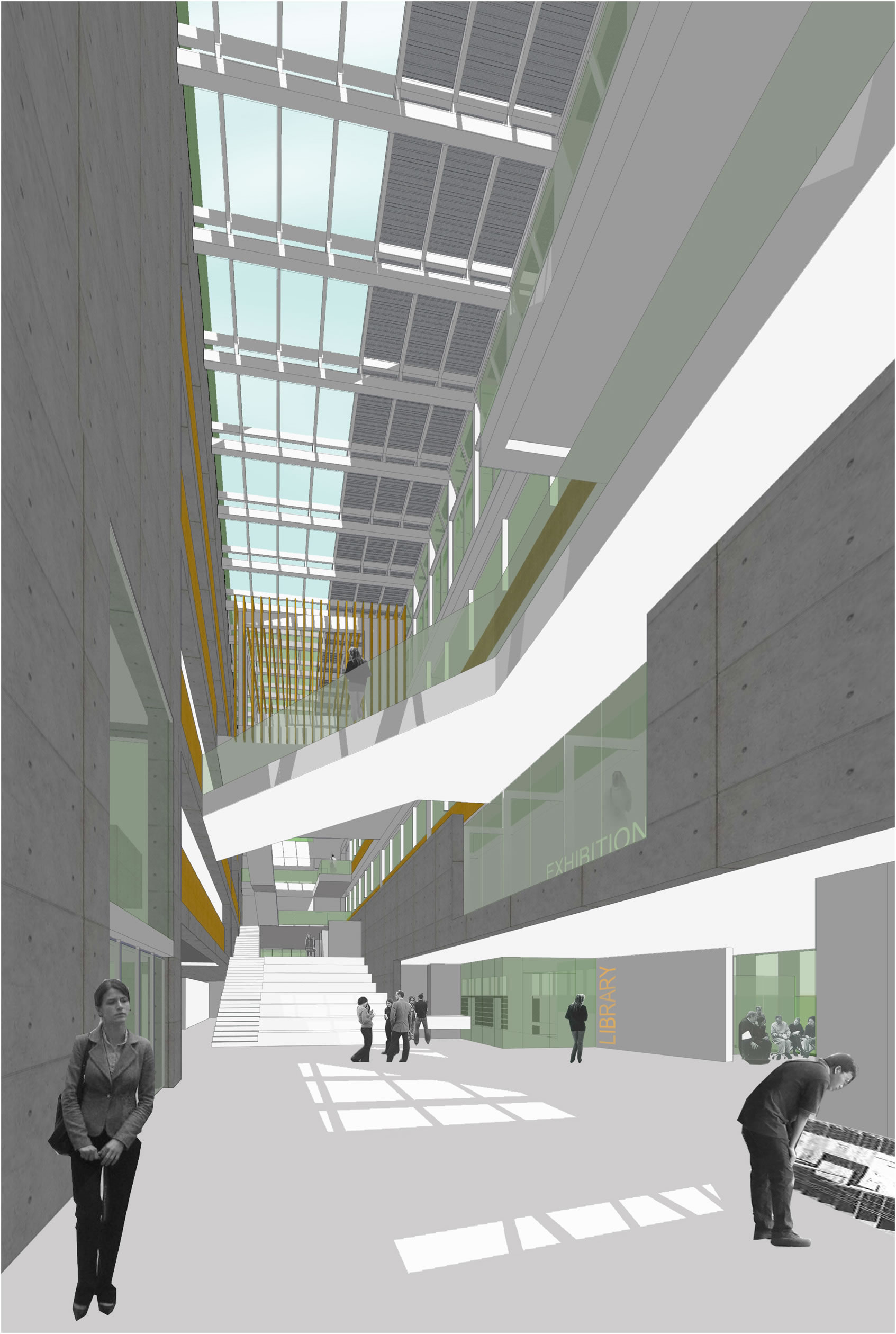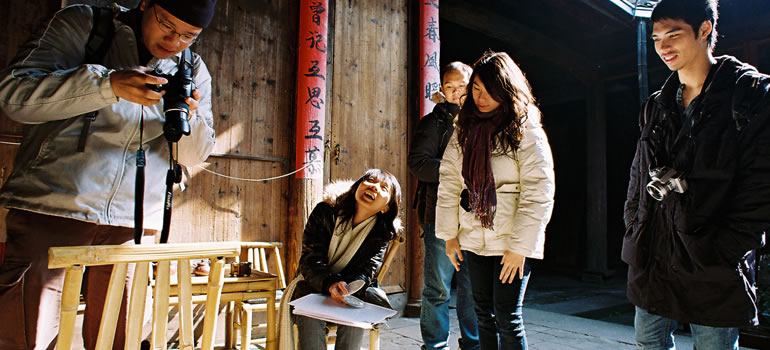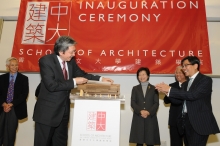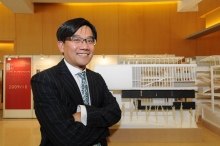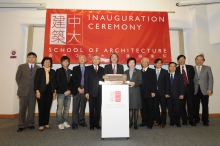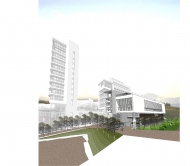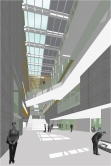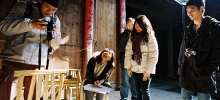CUHK
News Centre
CUHK School of Architecture Inaugurated to Lead Architectural Teaching and Research
The Department of Architecture at The Chinese University of Hong Kong (CUHK) has changed its status to School of Architecture on 1 August 2009. An inauguration ceremony of the new School was held today (15 January) on the University campus. Officiating at the ceremony were The Honourable John Tsang, Financial Secretary of the HKSAR Government; The Honourable Mrs. Carrie Lam, Secretary for Development of the HKSAR Government; and Prof. Lawrence J. Lau, CUHK Vice-Chancellor. An inauguration lecture by a world famous architect, Prof. Yung Ho Chang, Professor and Head of Architecture of MIT, also took place after the ceremony, where he shared his insights on contemporary architecture with fellow members of the School.
At the ceremony, The Honourable John Tsang congratulated the inauguration of the School, ‘Over the past two decades, CUHK has gained a well-earned reputation for architectural education. It excels in both teaching and research in areas ranging from green and sustainable architectural design to urban planning to building technology. Most importantly, students learn about the enormous contribution the profession can make to society. I was impressed to learn about your involvement in reconstruction work in the earthquake-hit region of Sichuan. This new School marks the start of a new era in architectural studies at CUHK. With its well-structured programmes, world-class teaching staff and state-of-the-art facilities, I am confident that the School of Architecture will cultivate locally trained professionals who have the passion and the heart to serve our community.’
The Department of Architecture at CUHK was set up in 1991. With the leadership of the founding Chairman, Prof. Tunney Lee, the Department has developed into a strong academic department supported by over 60 faculty members and supporting staff with current enrolment of more than 260 students. Over the years, the Department has produced over 300 professional architects with five undergraduate and postgraduate programmes. The School of Architecture will continue to enhance its research and teaching specializing in five academic areas. The School houses three research centres and units, namely the Centre for Architectural Heritage Research, the Community Participation Unit, and the Environment and Sustainable Design Unit, focusing on the research and design for architecture conservation, sustainable design and community participation. They serve Hong Kong and the neighbouring Pearl River Delta in the fields of urban design and sustainable development.
Prof. Lawrence J. Lau also expressed great satisfaction over the development of the Department of Architecture over the last 19 years, and wished the new School to go from strength to strength, ‘On this joyous and memorable day, let us applaud the capable leadership of the heads of the Department past and present, who have helped to lay a solid foundation for the new School of Architecture. I would also like to congratulate all faculty members on their outstanding achievements over the years, which have brought credit to both the University and the Department. The successful launch of the School today would not have been possible without your collaborative effort and hard work.’
The role of architecture is to seek and create ideal living habitat for different uses. Quality architecture will improve and enrich living standard, raise cultural understanding in aesthetics and the sense of tradition and history, and benefit all inhabitants. However, with the changes in lifestyle, advances in technology, and many social and environmental issues raised over the years, architecture has to respond to the new situation and break through from the traditional framework. In addition, green building, climate change, historic conservation, technology and urbanization have become new factors in influencing architectural design. This has encouraged architects to discuss new theories and methodologies with an open attitude and will impart new meaning to 21st century architecture for greater tasks ahead.
Prof. Puay-peng Ho, Founding Director of the School of Architecture, remarked that teaching and research at the School will be reformed to provide an integrative and creative platform for considering the new elements in urban and architectural ambience and emphasize excellence in urban and building designs. The School strives for excellence to become an esteemed school in architectural education in the region. Due to the changes of the time and new architectural missions, the School will develop the following five academic areas:
‧Architectural Design and Design Theory
To focus on design by research in the area of excellent and award winning design by faculty members and students, the exploration of design principles in terms of space organization and tectonic issues, and community participation in Hong Kong and China; and the promotion of architectural excellence.
‧Building Technology and Sustainable Design
To focus on research in building technology and construction and integrating the design into architectural design. This is to achieve a holistic design with the aim of sustainable development. The School will also strive to provide leadership in academic and policy research in this area.
‧Design Computation
To focus on the use of digital technology for building design and simulation. This is to achieve accurate simulation and prediction of building performance for improving quality of building design.
‧Heritage Conservation, and History and Theory
The School will continue to advance research knowledge in the history of architecture in Hong Kong and the region, as well as the level of theoretical discourse. In conservation, the School will be the leading centre in Hong Kong in conservation research and projects as well as advising government agencies in policies and practice of architecture conservation.
‧Urban Design and Urban Studies
Urban design and urban studies focus on multiple issues relating to the city, particularly the effect of the physical environment on the quality of living of its inhabitants. The School will set up teaching programmes and research units to focus on urban studies of the region and involve scholars and practitioners of other discipline for a holistic understanding of the increasing complexity of the city. The School will also be involved actively in policy and public dialogue in urban issues.
The School of Architecture will place equal emphasis on teaching and research. On teaching, the School will reform its curriculum with specialization based on current architectural development and research strength of the School. The School will develop new teaching and research programmes in urban design and urbanism in the next two years. In addition, the School will recruit the best talents from around the world and enhance the solid teaching and learning foundations of the School.
In admission, the School actively promotes and admits local and foreign students of different cultural background so that learning can be enhanced with closer interaction in a multi-dimensional learning environment. With new programmes, there will be enlarged enrolment and increased academic fields, and at the same time augmenting disciplinary integration and exchange. This will lead to better education for future professionals and researchers.
In line with internationalization, the School will continue to engage with schools around the world for exchange. The School receives many incoming exchange students from around the world and has always supported its students to go abroad for exchange to extend their horizon. In addition, each student would have opportunities to go for field trips abroad for study and research.
The School will also capitalize on its unique location to develop into a leading School of Architecture in Hong Kong, mainland China, and the region. The School will organize academic conferences and invite famous architects and academics to give lecture at the School. This will enhance the transfer of knowledge. The School will continue to sign memorandum of understanding with many leading schools for enriching the experience of the students.
The School of Architecture will move into a new teaching block, which is designed to reflect the values and ideals in architectural education. The School places equal emphasis on teaching and research, underscores the importance of creative exploration and professional practice, and embraces positively the interactive learning mode adopted by students and teachers supported by multi-dimensional academic activities and open discourses. As a result, the design of the new building will have at its central core a four-storey high atrium to facilitate activities and discussion of different forms. Around the atrium are many teaching facilities, laboratories and the library so as to accentuate the openness and liberal academic platform. The building is designed with green building principles as the central core of the design concept in the aspects of natural lighting, ventilation, energy conservation and renewable energy sources. It will provide for students, teachers and researchers the most ideal environment for learning and engaging in creative works.
The Honourable John Tsang assembles the model of the new teaching block, symbolically laying the foundation of the new building of the School of Architecture
Prof. Puay-peng Ho, Founding Director of the School of Architecture, CUHK, with the model of a new teaching block
Prof. Tunney Lee, Founding Chairman of the Department of Architecture; Prof. Lawrence J. Lau, CUHK Vice-Chancellor; The Honourable John Tsang, Financial Secretary of the HKSAR Government; The Honourable Mrs. Carrie Lam, Secretary for Development of the HKSAR Government; Prof. Paul Lee, Dean of Social Science, CUHK; and Prof. Puay-peng Ho, Founding Director of the School of Architecture, CUHK (fourth to ninth from left), together with distinguished guests


